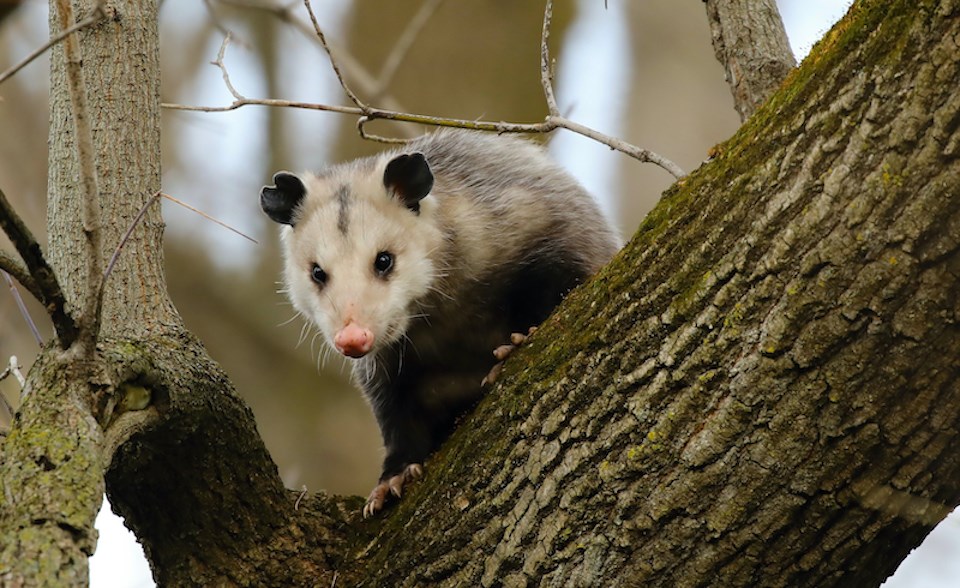Opossums may not appear harmful — but they wreak havoc on Metro Vancouver's native wildlife.
Like other invasive species, the Virginia opossum has established a foothold in the Lower Mainland. The animals have a voracious appetite and consume just about anything they come across (although they might not beat the American Bullfrog's impressively diverse diet). Their open diet has allowed them to thrive in places other species can't, particularly alongside humans. They also live in grasslands, forests and agricultural areas.
While native to Central America and eastern North America, opossums are the only marsupial species in North America. Over 120 marsupial species are found in South America and over 250 in Australia.
Marsupials have premature births and the newborn continues to develop while attached to its mother's nipples. While many marsupials, such as kangaroos, have pronounced pouches that cover their young, other species do not have this feature, according to the Encyclopedia Britannica.
Virginia opossums keep their babies in pouches and can have two litters a year, with an average of six to 10 babies each. Their gestation period is fast; a newborn pup crawls into its mother's pouch after only 13 days and begins feeding. After three months, the offspring are completely independent, according to the Invasive Species Council of BC.
The white-faced mammals live up to three years in the wild and have a pointed snout with mostly hairless, scaly tails. Males weigh just under six pounds while females weigh just over four and a half pounds. Their lower legs and feet are black but their toes are white and each hind foot has a "large opposable toe," according to B.C.'s Invasive Species Guide.
If they feel threatened, opossums may "play dead" by going into a catatonic state.
Why is the Virginia opossum a threat to Metro Vancouver wildlife?
The B.C. government says opossums spread to the Lower Mainland as "pets, for aesthetic reasons, as food, for sport hunting, and for the fur trade." They are also found on Hornby Island. Additionally, they could have been unintentionally brought into the area on motorized vehicles/trains.
While they aren't imposing animals, opossums aren't exactly small; they are about the size of house cats. Since they aren't picky about what they eat, they will consume "whatever food is available including mammals, birds, insects and other invertebrates, reptiles, amphibians, vegetation, fruit, and garbage."
Unfortunately, many animals they consume are on B.C.'s "species at risk" list; they can also spread diseases to humans and other animals.
Virginia opossums fall under B.C.'s "provincial containment" category for invasive mammals because they are a high-risk species with "significant potential to spread."
To prevent the spread of opossums, do not release any into the wild and ensure your garbage is inaccessible to wildlife. Report any sightings of them on the Report Invasives mobile apps. The apps can be used offline as well. You can complete the report when you are at the invasive species location, click 'Submit' and the report will be sent as soon as you are back in cell coverage.
If you do not have a smartphone, you may report using the online form or via email to [email protected] (attach your photo to the email).



